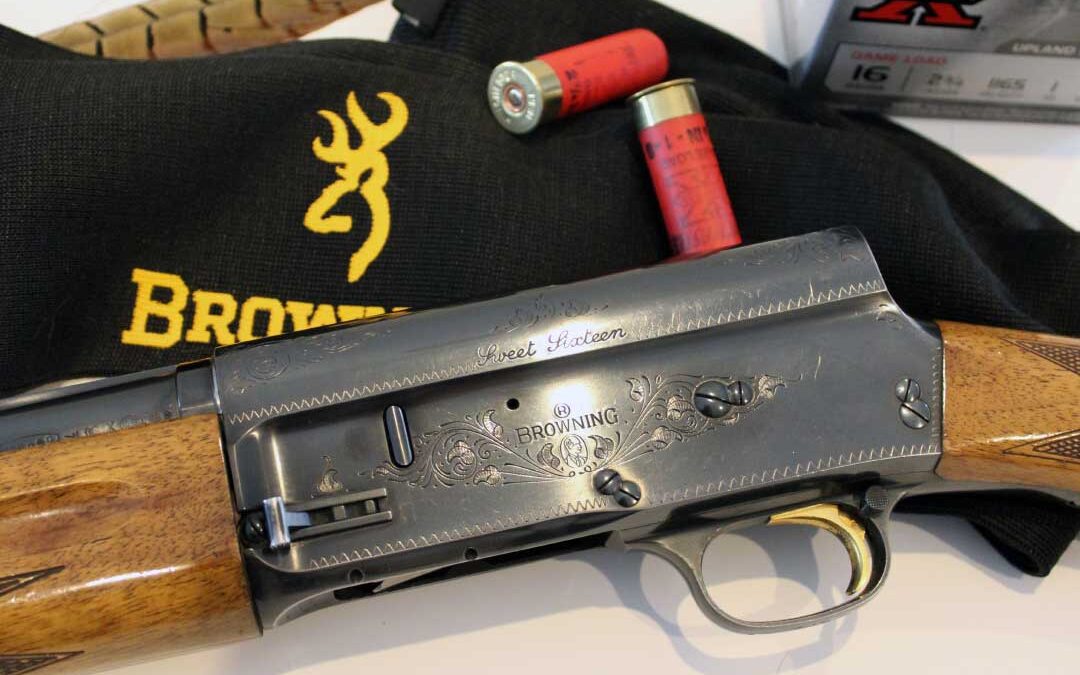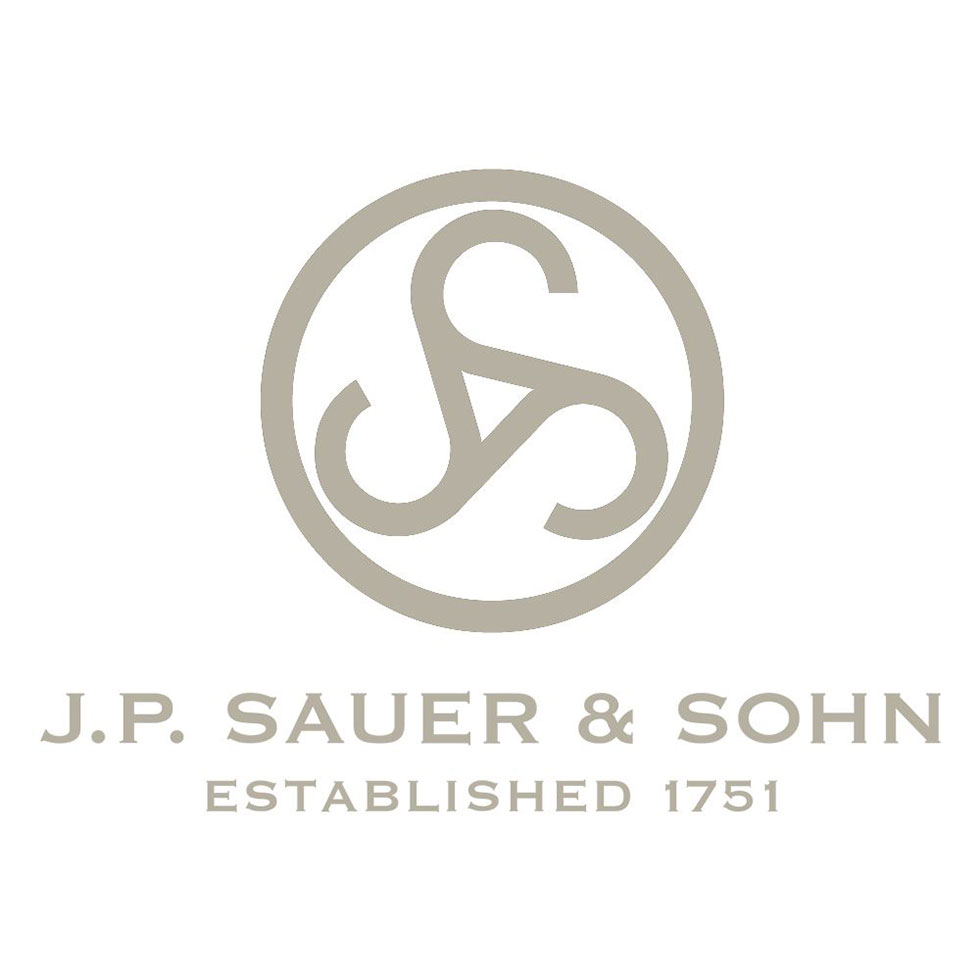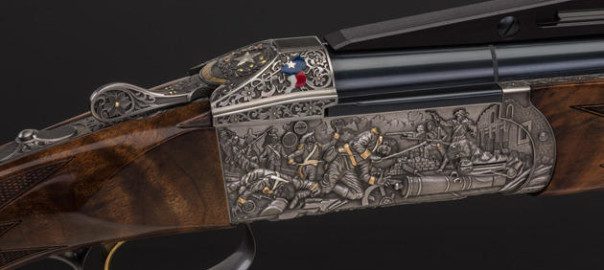Never in the history of the world of firearms has one inventor contributed so much—and garnered so much attention and admiration—than John Moses Browning. Today, the Browning firearms and product line, the iconic Buckmark trademark and all things Browning, continue to have a strong following after more than a century of existence.
Among the hundreds of firearms designed by John M. Browning was his automatic shotgun that became the well-noted A-5, or Auto-5, and in this shotgun line rests the iconic “Sweet Sixteen”— a classic 16-gauge semi-automatic shotgun that continues to be sought by hunters and collectors. This Belgium-made shotgun showcased the forward-thinking designs by Browning when partnered with the skill and attention to detail from workers in the Belgium production facility.
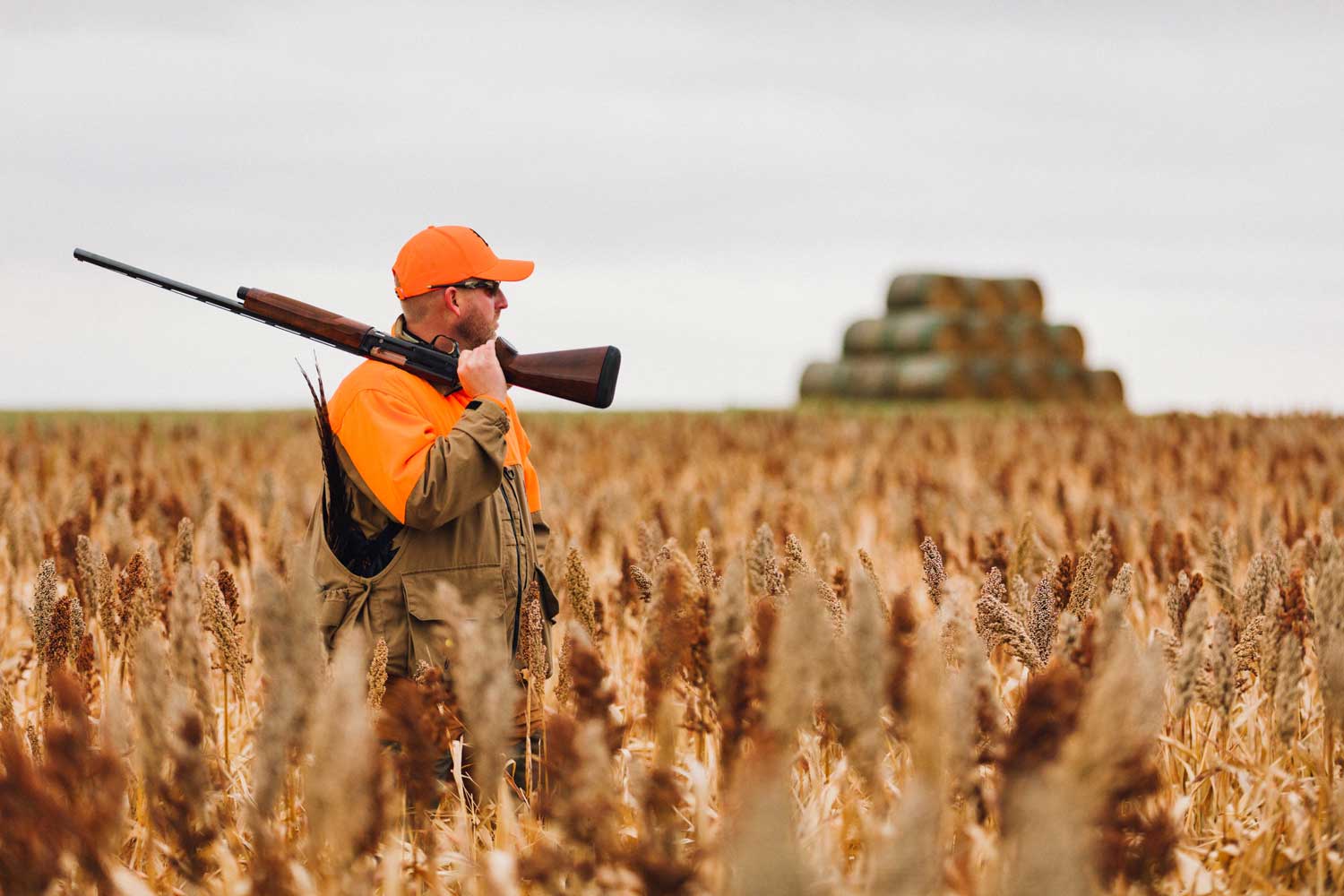
Millions of Browning’s A-5 type shotguns have been produced in all gauges by not only Browning, but also by Remington, Savage, Franchi, Fabrique Nationale and others.
Before you can understand and appreciate the easy-handling Sweet Sixteen, you need to look back at the development of shotguns from Browning’s ideas. His earlier Model 520 pump shotgun design was produced by Stevens in the early 1900s and had the noticeable upright hump that became a prominent feature of Browning’s patented automatic shotguns. He first applied for four patents on the unique design beginning in February 1900. After a failed relationship with Winchester Repeating Arms, Fabrique Nationale in Belgium produced the first A-5s in 1903. Gauges included 12, 20 and 16, plus a 3-inch 12-gauge magnum. Browning’s design put the shooter’s eye in line with the top of the receiver and the barrel ahead. It was an extended sight plane that made pointing—and shooting—easier for many shotgunners. Buyers agreed with the unique design and the short recoil to cycle a shotshell, as millions of purchases confirmed the success of this shotgun line.

The A-5 16-gauge shotgun was produced with 26- and 28-inch barrels with weights ranging from 6 pounds, 9 ounces to 7 pounds, 2 ounces. Most models featured hand-checkered French walnut stocks with semi-pistol grip. The original Auto-5 Sweet Sixteen was chambered for 2 9/16-inch shotshells with later versions chambered for 2 3/4-inch. It also contained a gold-plated trigger.
All original Sweet Sixteens were manufactured by Fabrique Nationale between 1950 and 1976. There are plain, solid matte rib and vent-rib models without changeable chokes. A shorter production run out of Browning’s Miroku, Japan, factory was produced from 1972 through the end of 1976. Those later Sweet Sixteens utilized Browning’s Invector changeable choke system, but original Belgium models are mostly available with fixed modified chokes.
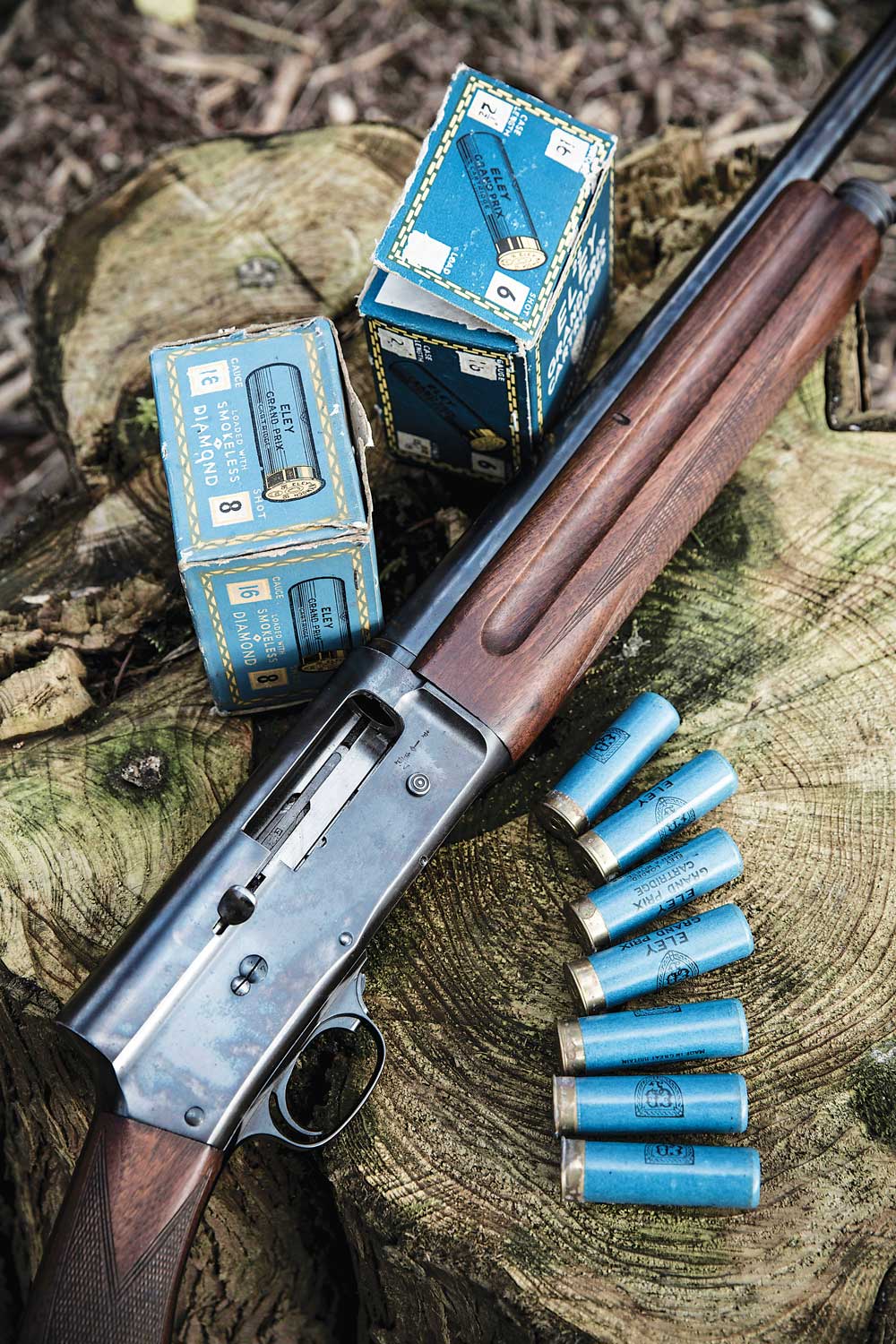
If you have an original Belgium production run Sweet Sixteen, you can determine the barrel’s choke by looking at the rear left side of the barrel. These marks provide choke details: * designates a full; -* improved modified; ** modified; *** improved cylinder. The 16-gauge is often called the gentleman’s gauge and pushes the shoulder with the recoil of a 20-gauge shotgun while generally delivering a 12-gauge load downrange, thus, the strong popularity with upland hunters. Another short-run Browning Sweet Sixteen semi-auto shotgun was produced in 1988-89 as a Ducks Unlimited auction gun. There were 4,500 produced and yes, these are difficult to find.
The latest Browning A-5 shotguns returned to the market in 2012 with a 12-gauge model as the first release. It’s important to note the second and newer generation is not designed like the original A-5. Instead, it utilizes Browning’s new Kinematic Drive recoil system to operate the action and eject a hull and cycle in a ready-to-go shotshell.

The newest production Browning A-5 Sweet Sixteen was relaunched in 2016. This new version has a slightly altered hump on the rear of the receiver, slimmer lines overall and an aluminum receiver. It tips the scales at slightly more than five pounds making it one of the lightest semi-auto shotguns available today. This shotgun version has a five-year/100,000 round guarantee.
The History Behind John M. Browning
To better understand the A-5 shotgun line and the history of firearms, you will have to look at the history of Mr. John M. Browning and his firearm designs.
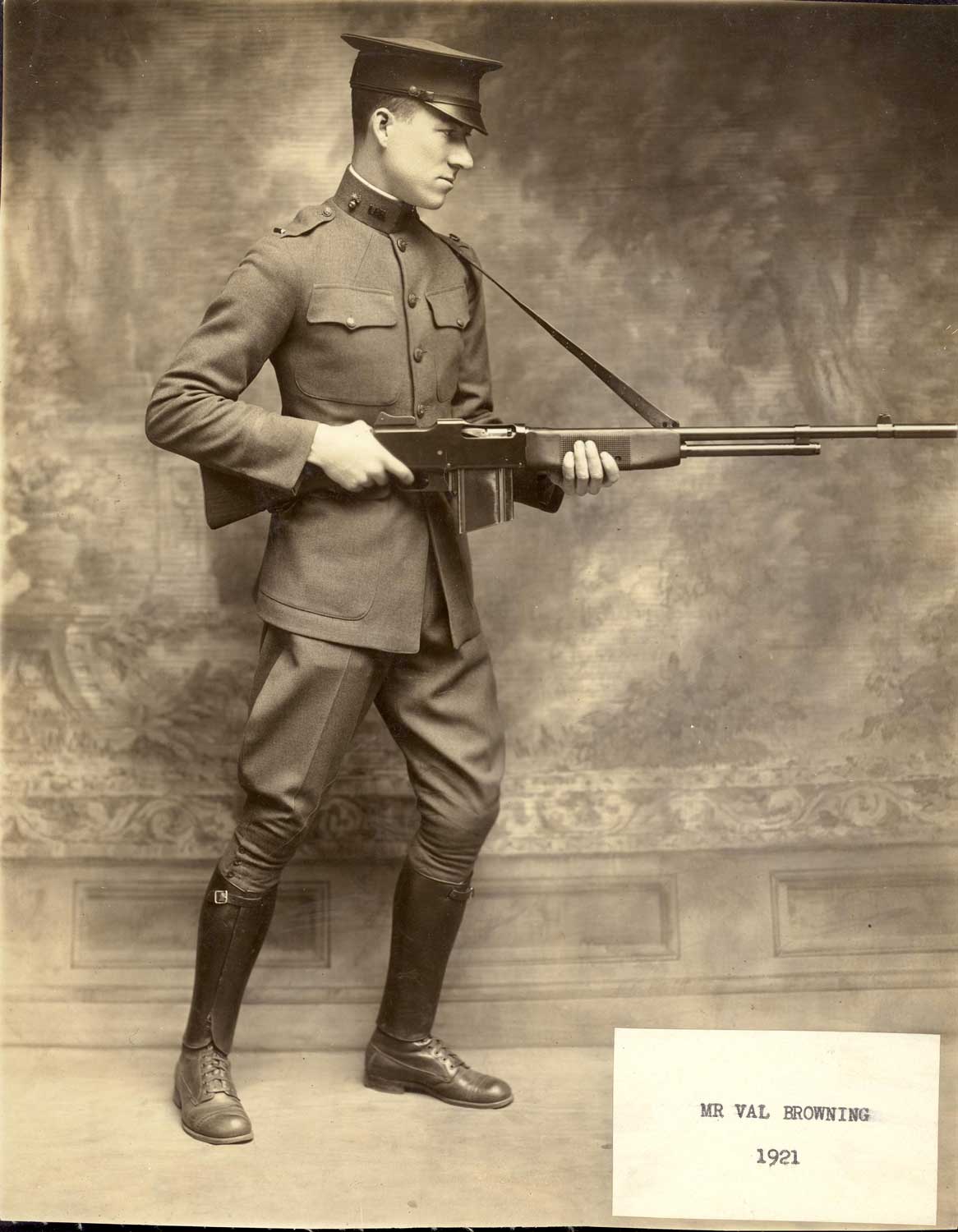
JMB’s son Val at top, with a BAR, dated 1921.
Young Browning began working in his father’s gun shop before he became a teenager. During that period, slide-action rifles were considered cutting-edge repeaters, but soon breechloaders and other firearm designs and ammunition improvements followed. Browning was working alongside his gunsmithing father, Johnathon Browning, in his Ogden, Utah, shop. John M. Browning was only 12 years old when he killed a prairie chicken with his first built firearm—a rifle built from scraps found in the discards at his father’s shop. That first gun had a cut-off barrel that was wired to a wood stock Browning hand carved. He was soon building guns that were better than anything currently available. By age 13, John Browning was repairing a wide range of firearms that came into his father’s gun shop as the West expanded. Young Browning regularly used a heavy and long metal turning lathe that belonged to his father. This precision work rapidly help him learn about measuring and cutting metal, building gun parts and improving existing firearms.
Browning was only 24-years-old when he sold a patented self-cocking single-shot rifle he designed and was building in Ogden to Winchester Repeating Arms for a mere $8,000. History shows that a Winchester salesman found one of the rifles while traveling the West, sent it to the Winchester headquarters in New Haven, Connecticut, and there the vice-president of the company was so impressed he quickly traveled to Ogden to visit the Browning gun factory. It was the beginning of a long, and profitable, relationship between John Browning and Winchester Repeating Arms.
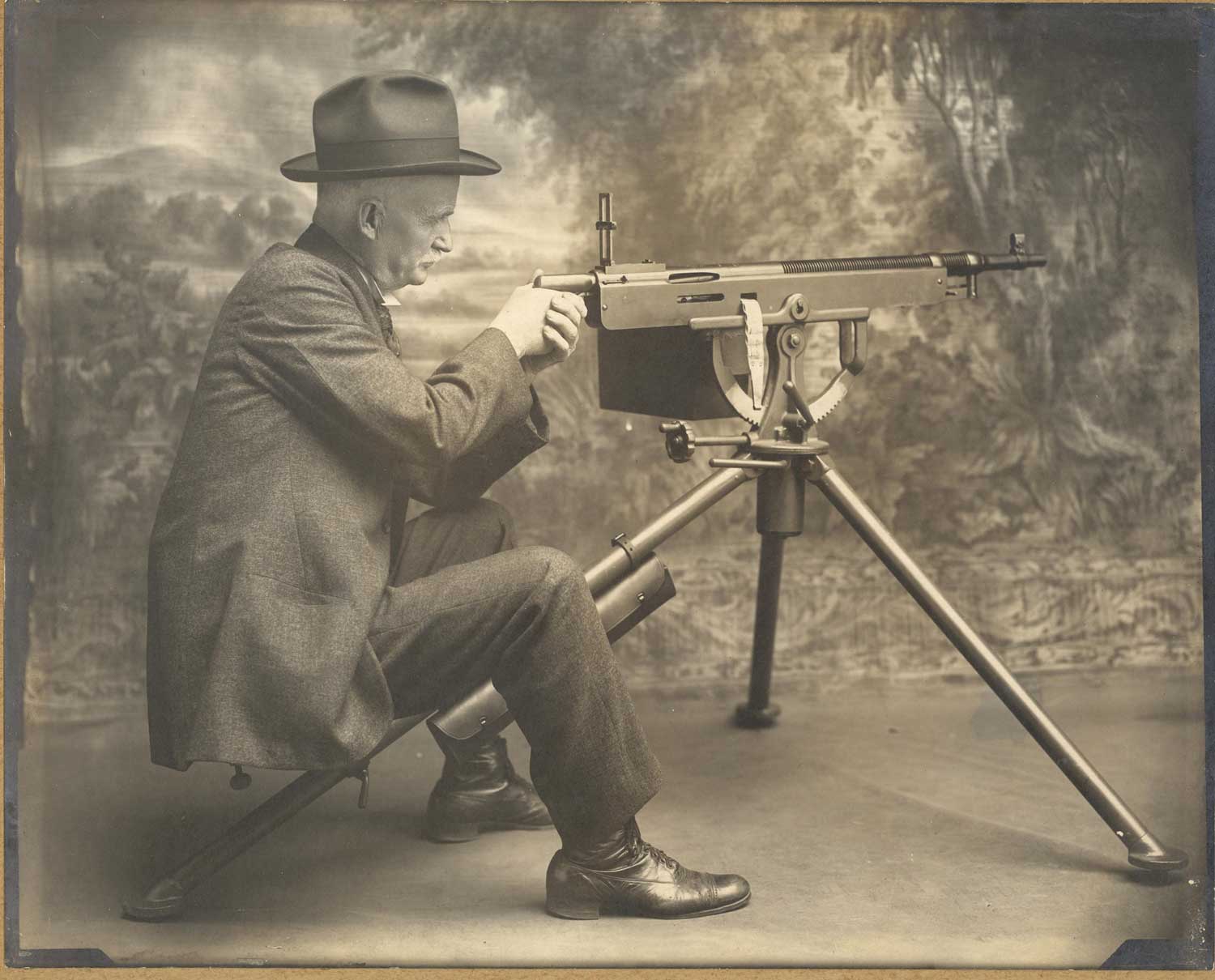
JMB with a Colt-Browning M1895, a fully-automatic water-cooled machine gun he designed for the military market—a big market for Browning.
That single-shot Browning-manufactured rifle discovered by the Winchester company employees was one of the many rifles Browning designed, patented and sold to Winchester in the decades ahead. Mr. Browning picked up the pace of inventing and secured 20 patents in only three years. That was unheard of in the firearms industry and America’s invention circles at the time. Browning would write ideas and draw designs as he thought of them while he was also working on other projects. Some designs for new firearms and parts ended up being drawn on walls in his office, empty cartridge boxes or across tattered envelopes. The ideas kept coming. It was also during this period when blackpowder cartridges were falling to the new smokeless powder avalanche in ammunition. Many of the rifles Browning designed were easy to adapt to this new wave of ammunition technology so Browning-designed firearms reached the hands of more and more gun buyers. The 30-30 Winchester cartridge that soon appeared in smokeless cartridges met the perfect match—the Winchester- produced Model 94 lever-action rifle that John Browning had crafted.
Browning’s ideas expanded beyond rifles. Mr. Browning also designed the still-popular Model 1911 semi-auto pistol and the 45 ACP cartridge to accompany it. This pistol was mass-produced by Colt and used heavily by the military as were many other firearms designed by Browning and built by Colt. Browning also was instrumental in designing numerous military machine guns that served U.S. and Allied forces for more than 50 years. The famous tripod-mounted M2 (alias the venerable Ma Deuce) .50-caliber belt-fed machine gun is well recognized and revered. An early .30-caliber machinegun design by Browning was water-cooled—far ahead of its time. Browning even designed the belt-fed system for many of the machineguns he created because none existed. His Browning Automatic Rifle (BAR) served on and conquered many battle fields. He also led the way in developing anti-aircraft arms for military uses with the 37mm automatic aircraft cannon being in this mix.
Many of the lever-action rifles and pump shotguns J. M. Browning designed and sold to Winchester Repeating Arms are credited with changing the course of American history and the world.
In this group are the Winchester 1886, 1894 and 1895 lever-action rifles. A slide-action shotgun Browning designed was sold to Remington Arms and manufactured as the Remington Model 17. This shotgun design later came to market as the Ithaca 37. Even the popular and easily recognized Auto-5 shotgun was also released by Remington as its Model 11 shotgun. Nearly all of these firearms, or close variations, are produced, sold and used by hunters, shooters and collectors everywhere. All came from the hands of one inventor, but through manufacturing by many companies. It provided John M. Browning the time to do what he liked most—designing firearms.
Among those designs, his automatic shotgun built the largest legion. It’s important to note that millions of Browning’s A-5 type shotguns have been produced in all gauges by not only Browning, but also by Remington, Savage, Franchi, Fabrique Nationale and others. Mr. Browning excelled at thinking, inventing, designing and patenting new firearm designs, then selling the patent and design to other manufacturers.
In 1997, long after Browning’s passing, the company announced the A-5 series was being discontinued. Those final guns shipped in February of 1998. Nearly two dozen variations of the A-5 had been produced during the more than 25 years of production, including numerous commemorative models. The A-5 Final Tribute was produced in 12-gauge only. One model recognizing the Canadian Olympics in 1976 was also released. Another notable A-5 shotgun is an Auto-5 police contract version manufactured in the 1930s and imported into other countries in 1999.
Gun owners and buyers around the globe strongly recognized the Browning brand and Belgium manufacturing as the gold standard. When it was announced in 1976 that Browning would move production of the Auto-5 shotgun from Belgium to a factory in Miroku, Japan, the industry and legions of A-5 enthusiasts were shocked. Some were angered.
“It was 1976 and I seriously thought someone was going to bomb our corporate office,” says Scott Grange, Browning’s Public Relations and Shooting Promotions Manager. Grange was a young technician in Research and Development at the Browning headquarters in Morgan, Utah. He felt the wrath firsthand from those who could not believe Browning would do such a thing after seven decades of tried-and-true Belgium production.
“I was shooting trap one Wednesday evening at the local gun club when a guy approached me as I was exiting the field,” recalls Grange. “He knew who I was, and where I worked. I thought I had heard every cuss word in existence—until that moment. What flew out of his mouth literally set me back on my heels. I was 22 years old and not generally intimidated. But this dude, I’m guessing in his early 40s, with fire in his eyes, wanted a piece of Browning, and I was the unlucky one who was in the wrong place at the wrong time. Yes, I was intimidated. Lucky for me, there were several gentlemen, of sound mind, who saw what was happening and came to my rescue.”
Grange said the Miroku move literally prolonged the life of the Auto-5 shotgun line. Belgium production costs had reached a point where Browning management was forced to take a very tough decision—either discontinue production of Browning’s iconic design or take advantage of the relationship established years earlier with Miroku.
“Although tough at the time, the decision to move Auto-5 production to Miroku was the right call,” Grange says. “It gave enthusiasts of one of the greatest shotgun designs of all time two additional decades of life.”
Browning As a Business
John M. Browning graduated school at the age of 15. He was mostly interested in English and writing so he could complete repair tags for firearms he was working on after school. He soon had his own gunsmithing shop and enrolled his brothers to join him. He and his brothers later built a new and bigger gun shop in Ogden (with no formal construction training) as business grew and word spread that Browning had secured a patent for a firearm he designed. That factory bore a large sign on the front: “J.M. Browning & Bro; Guns, Pistols, Amunition & Fishing Tackle.” Yes, ammunition was misspelled on the sign, but rarely noticed. When the factory held the grand opening in 1882, Browning had 25 rifles built and placed on a wooden rack for sale. He was designing firearms, but now also manufacturing firearms. Those rifles all sold in a few days during the grand opening. Browning had drastically underestimated that he would only sell a hundred rifles in a good year of business. Business boomed. It was also in 1882 when Browning applied for and received yet another U.S. patent—for a repeating rifle with a tubular magazine.
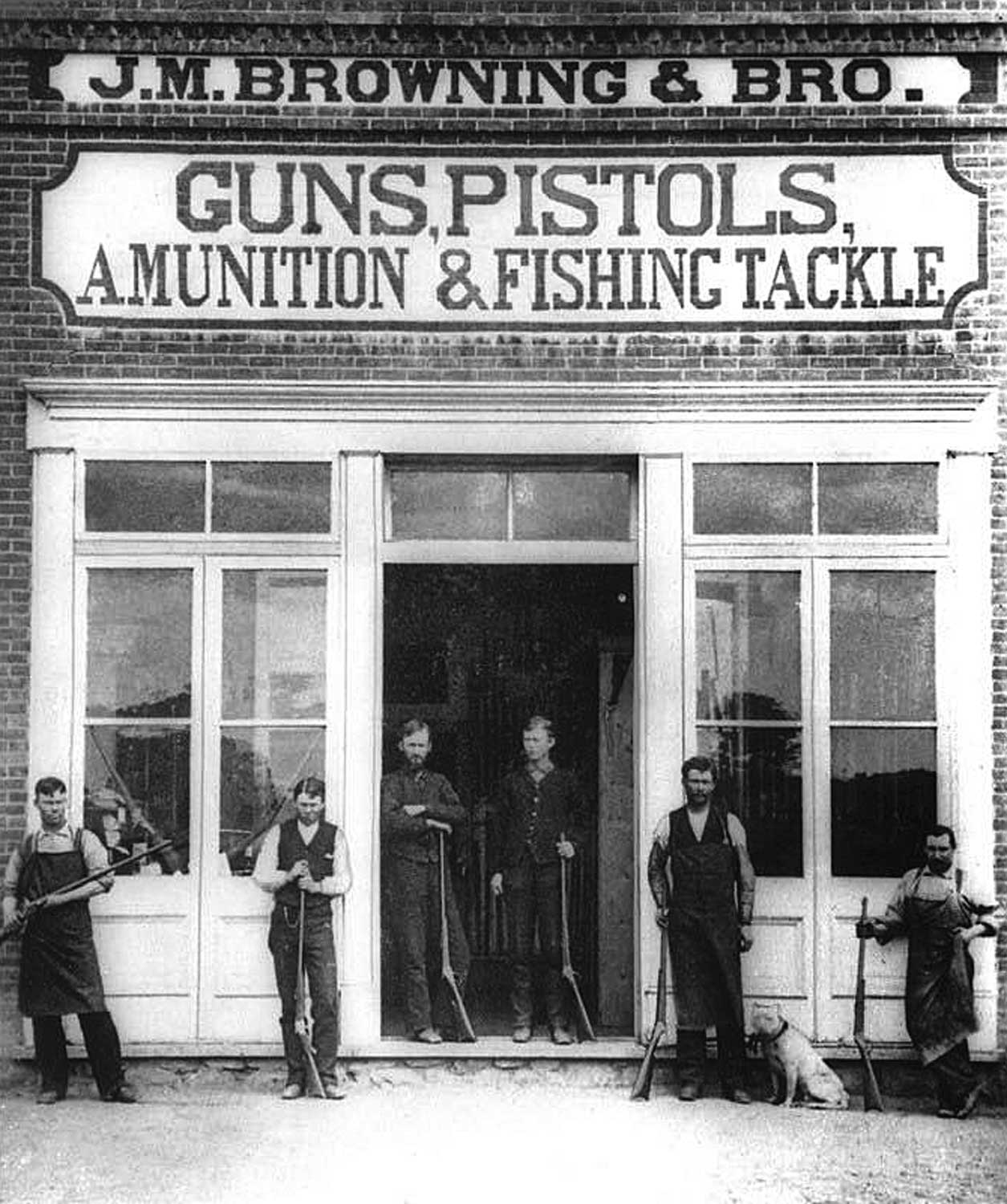
Browning Bros. business increased dramatically so it soon expanded again into a larger building in town and began a mail-order business complete with a catalog. Their business reputation and quality rapidly expanded across the West.
The Shotgun Saga
Browning had spent much of his early design time creating new single-shot and lever-action rifles. His interest in shotguns, however, increased dramatically when he and three friends began competing at live-bird shoots and at trap shooting events. These attention-grabbing shotgunners used lever-action and pump-action shotguns Browning had designed—and that Winchester Repeating Arms built. John Browning again chose to always be behind the scenes and was glad no Winchester-built firearm he designed ever bore his name.
In 1902, as shotguns were adapting to smokeless shotshells, Browning turned his attention to semi-automatic shotguns and his Auto-5 design was unveiled. This new shotgun’s shock absorber made it capable of handling what was recognized as a widely faltering pressure from shotshells being mass manufactured at that time.
The Auto-5 shotgun design is also prominently recognized as the firearm that ended a decades-long working relationship between John M. Browning and Winchester. Mr. Browning felt the shotgun was valuable and would be highly profitable. This time he asked for royalties per gun and not just the sale of a patent for a sum. The Winchester company refused. Browning also told Winchester their shotshells (in this period fireams and ammunition were under the same umbrella) were among those with faltering pressures. That comment was not well received.
The unequalled design of the A-5 kept this shotgun as the industry leader in sales for more than 50 years.
End of an Era
John Moses Browning died in November 1926 in Belgium while at the Fabrique Nationale factory where he was helping lead production of firearms and his Superposed over/under shotgun. Mr. Browning has been frequently labeled as the greatest firearms inventor the world has ever known.
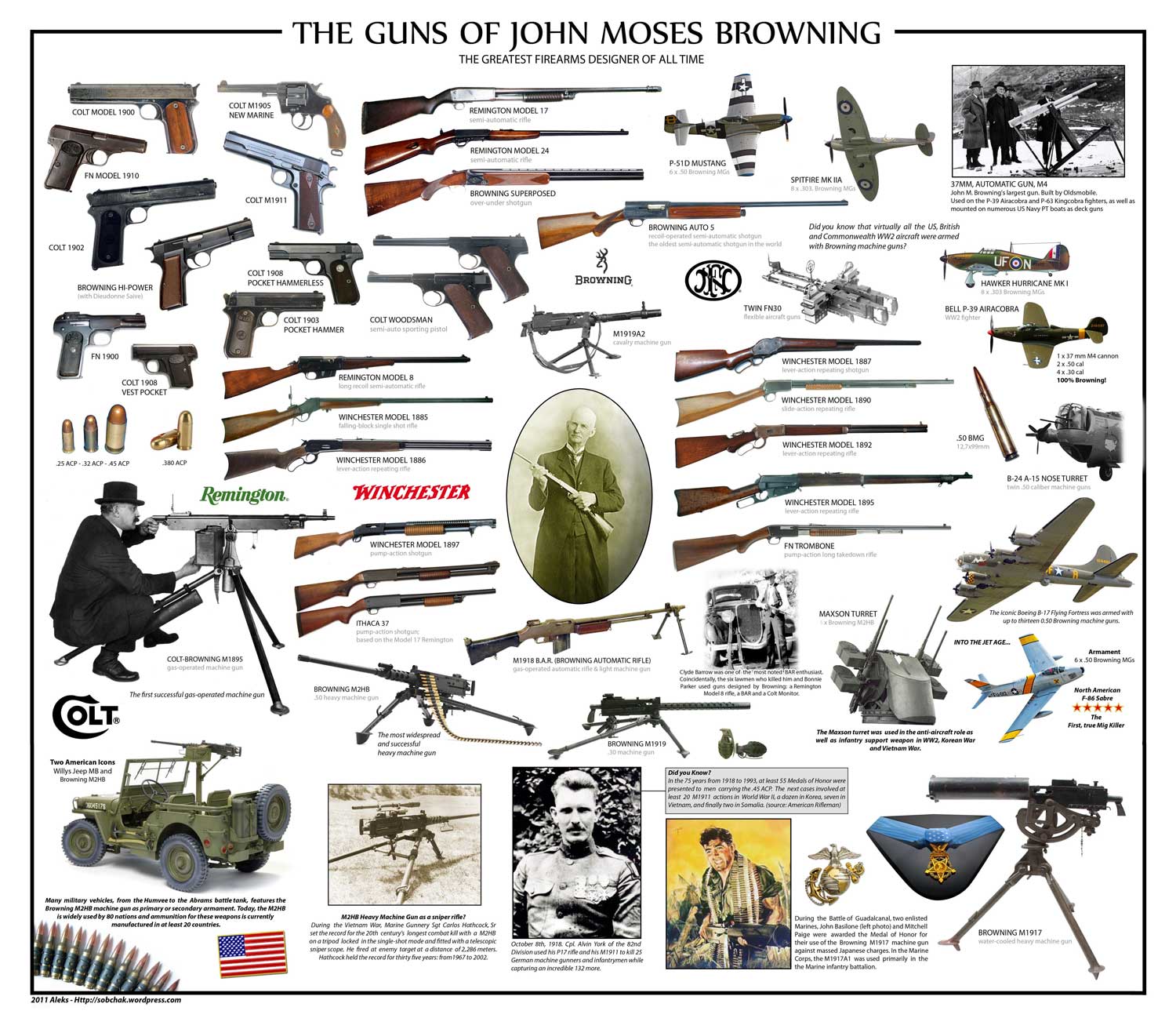
Browning obtained more than 125 U.S. patents that spanned across 80 distinct firearms and into many designs or improvements. He also designed several .30- and .50-caliber rifles along with fully automatic machine guns used by numerous militaries around the globe. Those firearms and patented designs were sold or produced in partnerships with Winchester, Remington, Colt and a long list of other manufacturers. The selection of Browning firearms produced by other manufacturers ranged from .25-caliber pocket pistols to .22-caliber semi-auto rifles and pump-action shotguns.
As history notes, John M. Browning died in Belgium while overseeing firearm production on the assembly line. It should be noted that at the time of his death, John M. Browning was also working on another ingenious design, the over/under shotgun, better known as the Browning Superposed.
When production of many Browning firearms moved to other regions of the world, Browning’s shotgun production stayed firmly planted in Belgium for decades after.
This article originally appeared in the 2021 Guns & Hunting issue of Sporting Classics magazine.
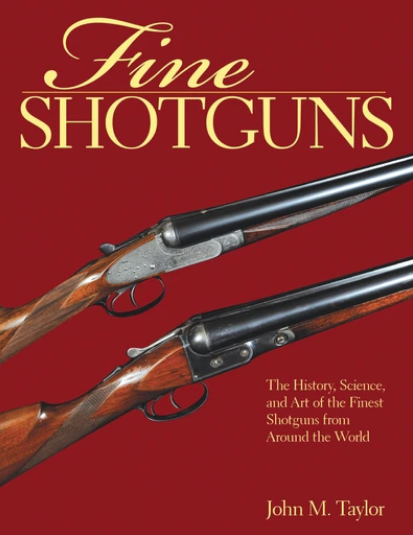 In Fine Shotguns, expert John M. Taylor offers a global view of shotguns using photographs and descriptions of guns from the United States, Britain, Germany, Austria, France, Spain, and Italy. Here are all types of shotguns: single barrel, double barrel, combination guns, hammer shotguns, paired shotguns, special-use guns, small-bore shotguns, shotgun stocks or shotguns with metal finishes, and bespoke shotguns. This all encompassing guide includes sections on how to care for and storage your weapon, what accessories are available for your model, and how to choose the perfect traveling case. Buy Now
In Fine Shotguns, expert John M. Taylor offers a global view of shotguns using photographs and descriptions of guns from the United States, Britain, Germany, Austria, France, Spain, and Italy. Here are all types of shotguns: single barrel, double barrel, combination guns, hammer shotguns, paired shotguns, special-use guns, small-bore shotguns, shotgun stocks or shotguns with metal finishes, and bespoke shotguns. This all encompassing guide includes sections on how to care for and storage your weapon, what accessories are available for your model, and how to choose the perfect traveling case. Buy Now

